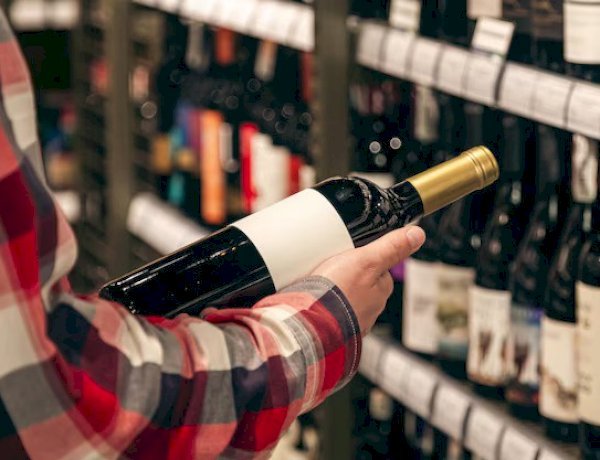Scotch Whiskies – Discover the Heritage, Craftsmanship and Modern Elegance of Scotland’s Finest Spirit
Discover the world of Scotch Whiskies, exploring their heritage, craftsmanship, sustainability, and innovation behind Scotland’s most iconic spirit.

Scotch whiskies carry stories in every sip — stories of peat and heather, of glens and sea spray, of families and distilleries who have refined an ancient craft into an art. They are part of Scotland’s proud cultural legacy, much like its tartans, craftsmanship, and traditional Scottish gifts that celebrate the nation’s spirit. This article is a guide and an invitation: we’ll travel through history, unpack the techniques that make Scotch distinct, look at how the industry is evolving in the 2020s, and offer practical pointers for tasting and collecting. Whether you’re a curious newcomer or a seasoned collector, you’ll find context, verified market data, and tasting insight designed to deepen your appreciation and help you make informed choices.
The Timeless Symbol of Scottish Excellence

Image source: Pinterest.com
Scotch whiskies are the beating heart of Scotland’s culture, an art form in liquid shape that tells a story of patience, purity, and pride. Every bottle captures the rugged landscapes, crisp air, and centuries of craftsmanship that define the Scottish spirit. From the smoky shores of Islay to the smooth, honeyed valleys of Speyside, Scotch whiskies have come to symbolize excellence and timeless elegance. In 2025, this legendary drink continues to thrive, blending tradition with innovation in ways that captivate connoisseurs and newcomers alike.
A Heritage Etched in Centuries

Image source: Pinterest.com
The heritage of Scotch whiskies stretches back to the late 15th century, when monks first distilled “uisge beatha,” the Gaelic phrase meaning “water of life.” Over the centuries, this humble practice evolved into a national treasure. The passing of the Excise Act in 1823 was a turning point, legalizing distillation and ushering in a new era of refinement. What once began as small rural operations hidden from tax collectors transformed into a globally recognized industry that now supports over 11,000 jobs in Scotland and contributes more than £5.4 billion to the UK economy annually, according to the Scotch Whisky Association’s 2024 data.
Each Scotch whisky reflects its origin. The five official regions of Scotland are central to this diversity:
-
Highlands – Bold, full-bodied whiskies with spice, heather, and light smoke.
-
Lowlands – Softer, floral, and grassy drams that are smooth and approachable.
-
Speyside – Elegant, sweet, and fruity styles known for balance and depth.
-
Islay – Intense peat smoke, maritime salinity, and medicinal notes.
-
Campbeltown – Complex whiskies with brine, fruit, and a subtle coastal tang.
Each region’s unique combination of soil, climate, and water creates a flavor identity that cannot be replicated anywhere else in the world.
The Art and Science of Craftsmanship

Image source: Pinterest.com
The craftsmanship behind Scotch whiskies is an intricate process that marries science and artistry. Every drop begins with three pure ingredients — malted barley, water, and yeast — but the journey from grain to glass is what makes Scotch legendary.
The process unfolds through these careful stages:
-
Malting: Barley is soaked, germinated, and dried (often over peat smoke) to develop flavor.
-
Mashing: The malted barley is ground and mixed with hot water to extract sugars.
-
Fermentation: Yeast converts these sugars into alcohol, creating a liquid known as “wash.”
-
Distillation: The wash is distilled (usually twice) in copper pot stills to purify and concentrate flavors.
-
Maturation: The clear spirit ages for a minimum of three years in oak casks — often sherry, bourbon, or wine barrels — developing color, aroma, and complexity.
This process takes patience and precision. Time, temperature, and wood interaction shape each whisky’s soul, ensuring that no two casks are ever quite the same. The skill of the master blender lies in balancing these variations to create harmony and consistency — the hallmark of every great Scotch.
Scotch Whiskies in the Modern World

Image source: Pinterest.com
In 2024, global Scotch exports reached approximately £5.4 billion, according to the Scotch Whisky Association. This equals roughly 1.4 billion 70cl bottles shipped worldwide — an astonishing 44 bottles exported every second. While export volume rose nearly 4%, overall value dipped by about 3.7%, reflecting shifts in global consumer demand and currency fluctuations. The United States remains the largest market by value, followed by France, India, Taiwan, and Singapore. The rise of markets like India, which recently surpassed France in Scotch imports by volume, shows that whisky appreciation is no longer limited to the West. Meanwhile, the Asia-Pacific region, led by China and Southeast Asia, continues to grow rapidly, accounting for roughly a quarter of global Scotch revenue.
Modern Scotch is in the midst of a renaissance. Distilleries are investing heavily in innovation, sustainability, and new experiences. Experimental cask finishes — including rum, port, and even sake casks — have become common, introducing new flavor dimensions. Sustainable production is another major trend: many distilleries now use renewable energy and water recycling systems, while some, such as Glenmorangie and Bruichladdich, are pioneering carbon-neutral production. The industry’s ambition is to reach full carbon neutrality by 2040, a testament to Scotch’s evolving responsibility to the planet that sustains it.
Innovation, Investment and Modern Icons

Image source: Pinterest.com
Today’s Scotch landscape also celebrates artistry through limited editions and collector’s releases. These rare expressions tell stories of heritage, craftsmanship, and innovation. An example of this innovation is the Loch Lomond Four Heavenly Kings whisky, a collection that illustrates the blending of classic distilling traditions with contemporary production artistry. Each edition represents a symbolic guardian of Scotch heritage, embodying depth, balance, and elegance. It exemplifies how Scotch continues to evolve — not by abandoning tradition but by reimagining it for a new generation of enthusiasts.
The Scotch whisky market is valued at approximately USD 34.7 billion in 2024 and is projected to reach over USD 57 billion by 2032, growing at a compound annual rate of about 6.5%. Despite economic slowdowns and fluctuating trade conditions, Scotch maintains its prestige as the world’s premier whisky category. Collectors are increasingly treating rare Scotch as an alternative investment, with some bottles appreciating faster than traditional assets. The Knight Frank Rare Whisky Index has reported returns exceeding 400% over the past decade for certain collectible bottles. However, experts caution that while high-end bottles can yield impressive returns, the market requires careful navigation — authenticity, provenance, and storage all matter immensely.
The Experience of Enjoyment

Image source: Pinterest.com
Scotch whiskies are best appreciated with patience and intention. To make the most of your tasting experience, consider these time-honored practices:
-
Use a tulip-shaped or Glencairn glass to capture aroma.
-
Taste it neat first, then add a drop or two of water to open up subtle notes.
-
Sip slowly, letting the whisky warm on your palate before swallowing.
-
Pair thoughtfully: dark chocolate or roasted meats for smoky malts, seafood or cheese for lighter styles.
This simple ritual transforms whisky tasting into a meditative experience — one that reveals the craftsmanship, environment, and history behind every dram.
Challenges, Sustainability and the Future

Image source: Pinterest.com
As Scotch moves further into the 21st century, challenges and opportunities coexist. Economic pressures, changing consumer habits, and sustainability goals all shape the industry’s next chapter. Climate change has forced distilleries to reassess water usage and energy sources, while global competition encourages innovation without losing identity. Yet, despite these shifts, Scotch whiskies remain a symbol of integrity and excellence. Their makers continue to honor centuries-old methods even as they embrace technology and sustainability.
Conclusion
Scotch whiskies are a rare fusion of place, people, and patience — each bottle a distillation of Scotland’s landscape and history. The industry’s modern momentum, from sustainability initiatives to creative limited editions, demonstrates that Scotch is not merely preserving tradition but renewing it. For drinkers, collectors, and curious readers alike, the invitation is the same: taste with intention, seek provenance, and enjoy the many expressions this remarkable spirit offers. Whether you’re starting your first dram or hunting a rare release, Scotch rewards curiosity and care — and it promises a lifetime of discovery.
FAQs
1. How is climate change influencing Scotch whisky production?
Climate change is affecting water sources and barley quality across Scotland. Many distilleries are responding by adopting renewable energy, water recycling, and sustainable farming to preserve the integrity of Scotch whisky for future generations.
2. Why are younger drinkers showing interest in Scotch whiskies again?
Millennial and Gen Z drinkers are drawn to brands that value sustainability, storytelling, and innovation. Distilleries are adapting through creative releases, eco-conscious packaging, and immersive experiences that connect tradition with modern culture.
3. Are limited-edition Scotch whiskies a good investment in 2025?
Yes, rare bottles and themed collections have become sought-after investments. Releases from iconic names and modern brands, including limited editions like the Loch Lomond “Four Heavenly Kings,” often increase in value when well stored and authenticated.
4. What new trends are shaping Scotch whisky today?
Distilleries are experimenting with unique cask finishes, such as rum, wine, and port barrels. Digital transparency, sustainable production, and the growing popularity of craft expressions are defining the next era of Scotch whisky.
5. What is the outlook for the Scotch whisky industry in the coming years?
The global Scotch market continues to grow steadily, with emerging markets in Asia and Latin America driving new demand. Forecasts suggest a market value surpassing USD 57 billion by 2032, supported by premiumization and responsible innovation.




























